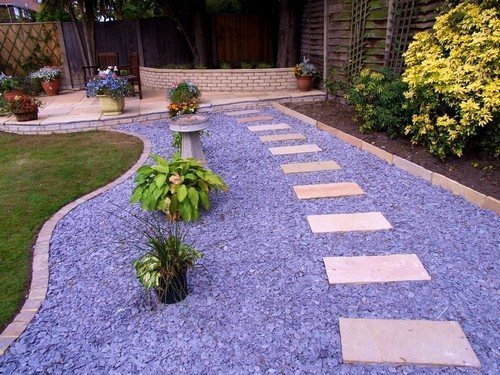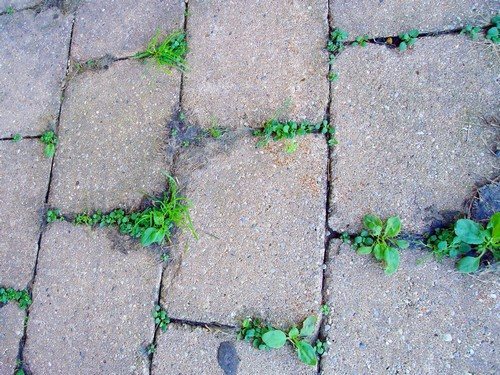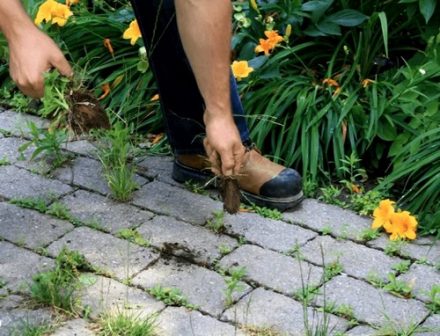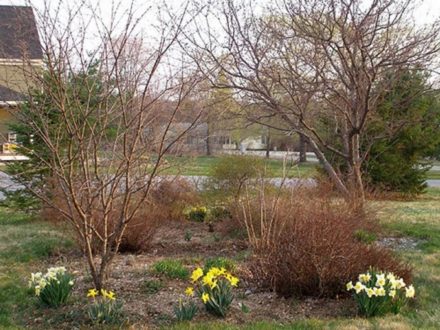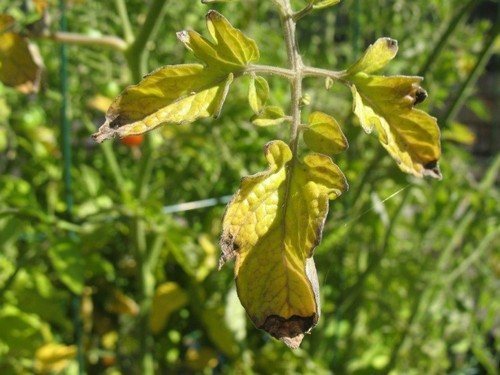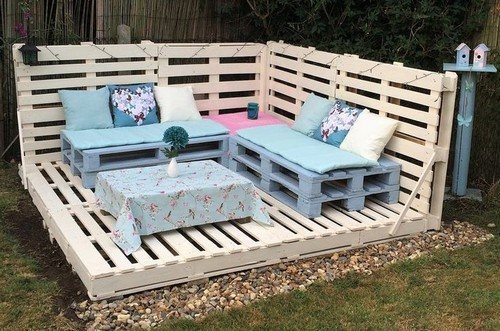Before you think about designing paths, you should place the beds correctly. They should be slightly raised above the general ground level, located to the south from the north. Rectangular frames made of stone, brick or boards will help with this. The bottom must be covered with film, and the frame itself must be filled with earth and humus.

Why are tracks needed?
Wise farmers know very well that there are sometimes as many weeds between the rows as in the beds themselves. Some use a very original solution: they sow the space between the rows with lawn grass or green manure, mowing them during the growing period. In other cases, as soon as the excess pests are removed, the bare soil begins to dry out, sucking water from the plants planted nearby.
To avoid this problem, full-fledged paths between rows are needed. They should be without bends, as close as possible to the crops. In a medium-sized area, a couple of main roads up to 60 centimeters wide and many paths up to 30 centimeters wide are sufficient. They can be rigid, stationary (for example, made of concrete) or bulk. The second type can be implemented from many options (cardboard, roofing felt, sawdust, shavings, etc.).
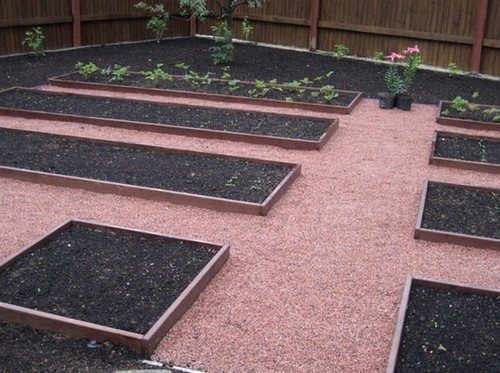
Sawdust
Caulked paths are temporary, but at the end of the season they allow the material to be used as fertilizer, which only provides double the benefit. The first way to improve the path is to fill it with sawdust.This will not only visually decorate the area, but also fertilize the soil well during the autumn harvest. Before the mulching process, the space between the rows must be watered, slightly moistening the soil. Put a three-centimeter layer of sawdust on top, and compact the resulting mound well. Sawdust can be taken both coarsely crushed and small.
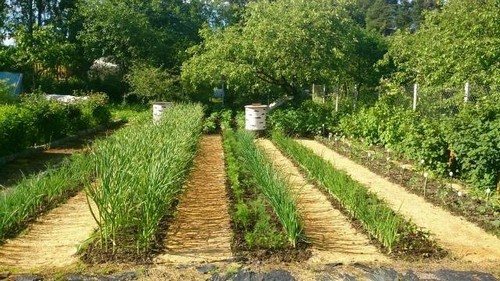
Boards
The second way to simply decorate the area is to lay boards between the rows. In this case, narrow boards, pre-sanded, treated with a solution against rotting, will come in handy. The path is suitable for those who like to change planting locations, since the boards are not fixed forever and are easily removed at the end of the season.
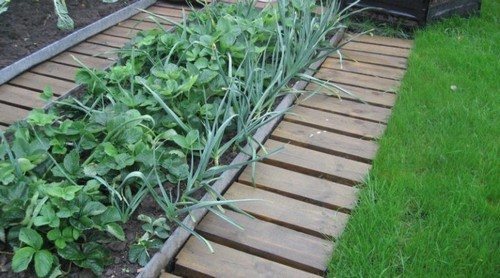
Tree cuts
The third way to decorate the area is to arrange paths between the beds using narrow tree cuts. Nowadays, this popular type of design meets all the requirements of landscape aesthetics, environmental friendliness, durability, and is not inferior in strength to concrete or stone. Do not miss the property of thermal insulation, because you can safely walk barefoot on the paths without worrying about your health. To lay out the paths, you need to take round cuts up to 20 cm thick, lay them in pre-prepared pits to a depth of 15 centimeters. A two-layer even drainage of sand and gravel is poured onto the bottom and into the cracks between the cuts. All this should be filled with water, and treated with an antiseptic during the drying process. The lower part can be covered with bitumen.

Crushed stone, pebbles, brick
This is one of the best ways to arrange a stationary path.If solid bricks should be firmly laid in the ground, gradually forming a path along the beds, then crushed stone and pebbles can simply be filled in. It is only important to secure the edges of the path with the help of sides, otherwise the embankment will spread over time.
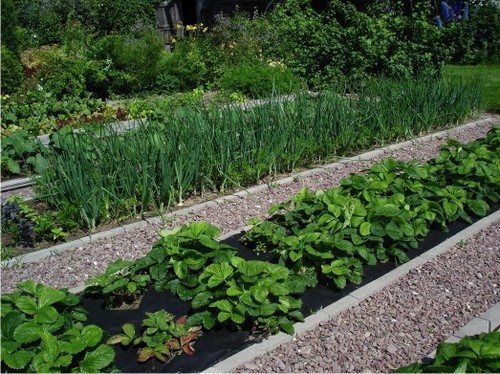
Paving slabs
The fifth method may seem the most convenient and comfortable for many. The tiled covering actively prevents the development of weeds and helps you do gardening without any problems even after heavy rains. It is important to make such paths straight, close to the beds themselves. If we are talking about a narrow row spacing, then a cushion of sand is prepared in advance. If the issue of weed germination is particularly disturbing, then separating the soil surface using geotextiles will help.
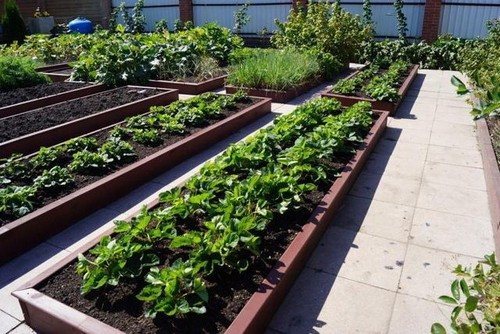
Newspapers
Garden paths made from newspapers are beneficial for two reasons: they require virtually no costs, and if properly covered, they will last for more than one season. To construct such paths you need a file of old magazines or newspapers and several buckets of sand. You don’t even have to dig a trench, you can just weed the grass and immediately lay newspaper on top. A binder of 12 newspapers, tightly covered with an overlap, is quite enough for a path five meters long. A small problem may arise only after a year or two, when the earth around the edges begins to settle and crumble. It is in such cases that a curb stone or trench will help. To properly lay the newspaper layer, the binder must be divided into sheets, and each spread folded in half, sprinkled with a little water (so as not to fly apart in the wind). Place a second sheet of newspaper spread next to it with an overlap of up to 5 centimeters and so on.As soon as the first layer of paper is laid out to the end, you can begin the second. To protect from rain, the resulting path should be covered with sawdust, gravel or sand, sprinkling a small layer on top (5-10 centimeters), leveling it tightly.
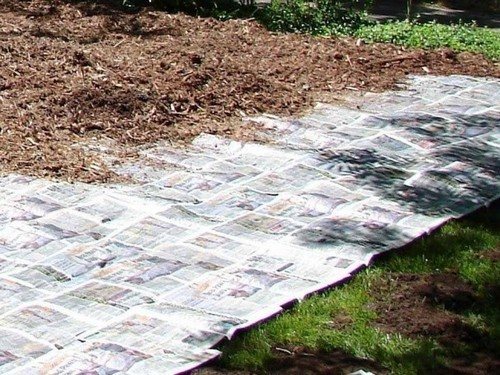
All of the above methods for arranging paths between beds are quite suitable for both ordinary summer cottages and garden areas with landscape design. Using them, you can not only beautifully improve the row spacing, but also benefit the earth.


